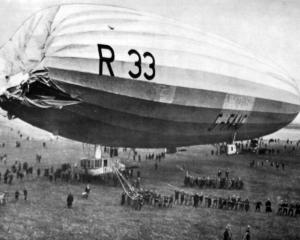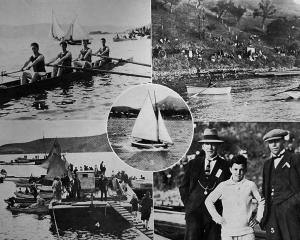
Where the carcases of beef and mutton in cold storage are numbered by thousands, the easy handling of the burdens is a very important matter. At present carcases are suspended from either a light hanger or a heavy wheel trolley. The former requires considerable strength to propel along the bar on which the hangers work, while the trolley is somewhat too cumbersome. Messrs Smaill and Hamilton have attached a ballbearing to the ordinary hanger, and in this way the handling of carcases is immensely simplified — in fact, with the expenditure of only a fraction of the strength at present required to shift a carcase a foot or two, it is claimed that a man may propel it for from 50ft to 60ft. This should do away with the trollies (which weigh 5lb each) entirely, and the hanger weighs only 11oz. What this means to the trade may be judged from the fact that at one freezing establishment alone in the South Island 45,000 hangers are in use. The invention has been protected, and patent rights are being applied for all over the world. Already the inventors have had inquiries for the supply of many thousands of the hangers.
• At Nelson recently, Mr Joseph Taylor, consulting geologist and mining engineer, delivered an interesting lecture on "My Discovery of Prehistoric Remains at Maruia in Relation to Man’s Antiquity". He stated that about three years ago he made a remarkable find in the Maruia Valley, which, after a careful study of the subject, he confidently spoke of as prehistoric remains. The lecturer then exhibited what he described as the cast of a skull, the petrified interior of a cranium which had been somewhat distorted by pressure, but which was remarkably complete and well preserved, considering its immense age. Actual measurements showed that it must have been quite equal in brain capacity to that of the average human skull of to-day. Mr Taylor also exhibited the segment of a cast of a limb exceeding by five inches the measurement of the arm of a member of the audience. A number of other striking anatomical fragments and accompanying vegetable fossils were shown. The lecturer claimed that the fragments were not merely prehistoric, but went back millions of years, and were probably the first remains of the kind to be found in New Zealand. They were, he said, millions of years older than the "Piltdown Skull", which had for the last few years been regarded by anthropologists as the earliest trace of man on the earth.
• A shock was received recently by the Old Age Pensions Department in this dominion, upon noticing that a pensioner, 67 years old, had not drawn his money for over a year. When it started to inquire if he had come into a fortune, or was merely dead, it was, according to an exchange, discovered that the ancient had enlisted as a youth of 44, had got past the doctor, scrambled through the training camp at Trentham, and gone away to fight at Gallipoli with the Fifth Reinforcements. He lasted through the famous peninsula until the evacuation, and is now probably in France fighting the Germans.
• It has been stated on several occasions recently in English papers (says the New Zealand Times) that the casualty lists published in the Old Country show that quite a large number of the men in English hospitals have gone from America. One of the hospital orderlies who returned by the Marama stated in conversation a few days ago that it was amazing to note the large number of Americans who were taken across the Channel for hospital treatment among English wounded. He was asked if these men were not chiefly with the Canadian contingents, but said, "Oh, not at all." There were wounded men from every British regiment who were American by birth.
• A new avenue of employment for women would appear to be presented by the acceptance of a clause by the Auckland Union of Jewellers, Clockmakers, and kindred Trades Unions in the Conciliation Court on Tuesday (says the New Zealand Herald). The clause provides that during the war, and for six months afterwards, women may be employed as polishers of enamelware and in similar work in jewellery manufactories. — ODT, 14.11.1916.
• COPIES OF PICTURE AVAILABLE FROM ODT FRONT OFFICE, LOWER STUART ST, OR WWW.OTAGOIMAGES.CO.NZ












